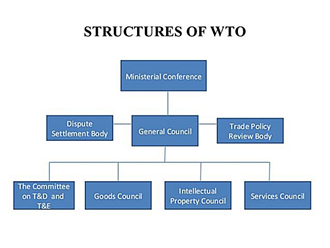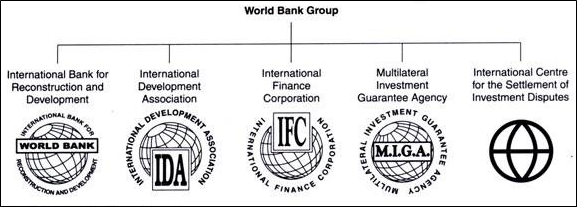Animal rearing refers to rearing of animal for various purposes like food, labour and cheap energy source. It is an allied sector which is related to agriculture and forms an integral part of rural economy. It contributes to more than 30% of the total Gross Value Added from the agriculture and allied sector. As per the 20th Livestock Census (2019), India is the world’s highest livestock owner at about 53 crore total population. It has the world’s highest buffalo population and is in top 3 in goat and sheep population. It is also the largest producer of milk.
Note: Livestock includes cattle (or cows), buffalo, goat, sheep, pig, horse, donkey, camel, yak and Mithun. Poultry farming is not included in livestock, although it is an animal rearing practice which includes raising of birds domestically or commercially, primarily for eggs, meat and feathers.
Performance of animal rearing sector in India
-
- GDP Contribution: The Gross Value Added (GVA) of livestock sector (at constant prices) is about Rs. 6,54,937 crores during FY 2021-22 which is about 30.47% of Agricultural and Allied Sector GVA.
- Milk production: India is number one milk producer in the world. It is producing about 230.58 million tonnes during 2022-23. The per-capita availability of milk is 459 grams per day.
- Fish Production: India is the third largest fish producing country, contributing 8 percent to the global fish production and ranks second in aquaculture production. The fish production in 2021-22 is 16.24 million tonnes comprising of marine fish production of 4.12 million tonnes and 12.12 million tonnes from aquaculture.
- Egg Production: The total egg production in the country is 138.38 billion in numbers in the year 2022-23. The per-capita availability of egg is 101 eggs per annum.
- Meat Production: India ranks 5th in the world in terms of meat production. The total meat production in the country is 9.77 Mn Tonnes in the year 2022-23. The top 5 meat producing States are Maharashtra (12.25%), Uttar Pradesh (12.14%), West Bengal (11.63%), Andhra Pradesh (11.04%) and Telangana (10.82%).
- Energy Production: Indian cattle produce around three-million tonnes of cow dung a day, according to data from the government’ s policy body NITI Aayog. The potential for Compressed Bio-Gas production from various sources in India is estimated at about 62 million tonnes per annum.
Significance of animal rearing sector
1. Income: Livestock rearing gives an additional income for farmers in off agricultural season. Moreover, the product of livestock sector has higher income realisation per unit cost input as milk, eggs, meat are high value product. As per the Situation Assessment of Agricultural Households and Land and Livestock Holdings of Households in Rural India, 2019, the income from livestock-rearing activities is higher than the crop income among the marginal farmers who possess less than one acre of land.
2. Employment: Livestock sector is one of the largest employment generating sources from agriculture sector. More than 60% of rural communities are directly or indirectly dependent on livestock sector for livelihood. For example – Dairy farming has created large scale employment in cooperative milk production and marketing. Brands like Amul and Mother Dairy have generated large scale formal employment in forward as well as backward linkages in dairy farming.
3. Raw material for food processing industry: Animal rearing diversifies the economy by providing a range of raw material. For example – Milk from dairy farming is used as raw material for production of range of other processed foods like yoghurt, cheese, ice cream etc. This creates scale for food processing sector. This diversifies the secondary as well as tertiary sector since many services like transportation, storage, retail chains are also created.
4. Earning of Foreign Exchange Reserves: Products like meat, poultry products, animal skin etc are items of exports from India. As per the latest data of APEDA, India exported more than Rs 32000 crore worth of livestock product. Demand of buffalo meat from India is very high globally. This is one of the prime sources of foreign exchange earnings from agriculture and allied sector.
5. Food and nutritional security: There is a high level of malnutrition among children in India. As per the NFHS 5 data, more than 35% of children are stunted, about 20% are wasted and more than 32% are under weight. Products like milk, eggs and meat are high in nutrition. Thus, there is an opportunity to integrate these products with POSHAN Abhiyaan of the Government of India and ensure food and nutritional security. This will also stabilize the income from livestock sector as government purchase will bring certain level of assurance in demand of these products.
6. Energy security: India’s large population of livestock is a cheap source of biogas. This opportunity can be exploited to provide cleaner and cheaper fuel for rural household. The GOBARDhan Scheme targets to extract wealth from waste to augment the clean energy supply in rural areas.
Challenges in the sector
1. Poor breed management: The high yielding indigenous breeds of cattle are poorly managed. The conception rate of artificial insemination is very poor. There is also limited availability of good quality bulls for artificial insemination. To add to that, there has been lack of enthusiasm as far as cross breeding programmes are concerned. After 3 decades of cross breeding, the crossbreeding population in cattle has only reached 20% and only 5% in
2. Low Productivity: Due to largely informal sector, there is a limited formal training and lack of access to best rearing practices. This is reflected in lower average yield as compared to global averages. For example – the average annual milk yield of Indian cattle is 1172 kg which is only about 50 per cent of the global average.
3. Frequent occurrence of diseases: Frequent occurrence of diseases like Foot and Mouth diseases and Influenza virus negatively impacts the healthy population of livestock and also leads to additional costs on health management.
4. Inadequate slaughterhouse facilities: A large number of slaughter houses in India are unregistered or make-shift slaughterhouses. According to unofficial estimates, more than 50% meats are supplied through these slaughterhouses. This increases the procurement and marketing cost to meet the standards.
5. Inadequate supply of feed and fodder: There is a substantial gap between the demand and availability of fodder in the country, particularly during the lean periods and at the time of natural calamities including droughts/floods. Moreover, these even are diverted to industrial use for making ethanol and producer gas. This leads to shortage of food for livestock sector and causes lower yield.
6. Inadequate availability of Institutional credit: Most of India’s credit to agriculture is extended to crop production. In Budget 2023-24, the livestock sector received only about 12 per cent of the total public expenditure on agriculture and allied sectors, which is disproportionately lesser than its contribution to agricultural GDP. This increases vulnerability of livestock farmers as they have to depend on informal source of credit at higher costs.
7. Lack of Storage and transportation infrastructure: There is no dedicated government agency on lines of Food Corporation of India and NAFED which ensures quality storage infrastructure. This leads to demand and supply mismatch and wastage of high-quality livestock output. For example, in 2018 global milk prices crashed which led to fall in prices of milk procured from farmers. They started releasing milk on road than selling it.
Schemes related to livestock sector
1. National Livestock Mission: It was launched in 2014-15. The scheme focuses on entrepreneurship development and breeds improvement in poultry, sheep, goat and piggery, including feed and fodder development.
2. Rashtriya Gokul Mission (RGM): It was launched in 2014. The scheme is important in enhancing milk production and productivity of bovines to meet growing demand of milk and making dairying more remunerative to the rural farmers of the country.
3. Dairy Processing & Infrastructure Development Fund (DIDF): It was setup in 2017-18. The scheme aims to modernize the milk processing plants and machinery and to create additional infrastructure for processing more milk.
4. National Animal Disease Control Programme (NADCP): It is a flagship scheme launched in 2019 for control of Foot & Mouth Disease and Brucellosis by vaccinating 100% cattle, buffalo, sheep, goat and pig population for Foot & Mouth Disease.
5. GOBAR-Dhan Scheme (Galvanising Organic Bio-Agro Resources): It was launched in 2018 to support villages to safely manage their cattle waste, agricultural waste and eventually all organic waste.
Spread the Word


